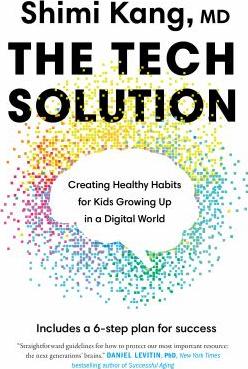
The tech solution : creating healthy habits for kids growing up in a digital world
Harvard-trained psychiatrist Dr. Shimi Kang reveals the essential habits your child needs for a healthy relationship to digital technology that will nurture their full potential. New research shows alarming increases in stress, anxiety, depression, loneliness, and addiction among those who have grown up in a world of booming digital technology. Yet, Dr. Shimi Kang does not believe technology as a whole is to blame. Just like the food we consume affects our bodies, Dr. Kang believes the way we consume technology can have profound effects on our minds. The Tech Solution simplifies the cutting edge neuroscience behind technology use to reveal the ways we are affected by different digital tech experiences--how some experiences nurture young, developing brains while others can set our children off down darker paths during their crucial formative years. Learn how to spot the signs of positive, neutral, and negative technology consumption, and how to work with children, teens, and young adults to find a powerful balance that will lay the foundation for lasting success. Whether your toddler has just become enraptured by your smart phone, your teen can't stop scrolling social media long enough to finish their lunch, or your 9-year-old is being cyberbullied, Dr. Kang will teach you how to guide your child toward a long-term positive relationship with technology that will boost their brain, help them create meaningful social connections, explore creative pursuits, and foster a sense of social responsibility and empowerment for many years to come.
Available Copies by Location
| Location | |
|---|---|
| Victoria | Available |
Browse Related Items
- ISBN: 9780735239548
- Physical Description 303 pages : illustrations ; 23 cm
- Publisher [Place of publication not identified] : [publisher not identified], 2020.
Content descriptions
| Bibliography, etc. Note: | Includes bibliographic references and index. |
Additional Information



